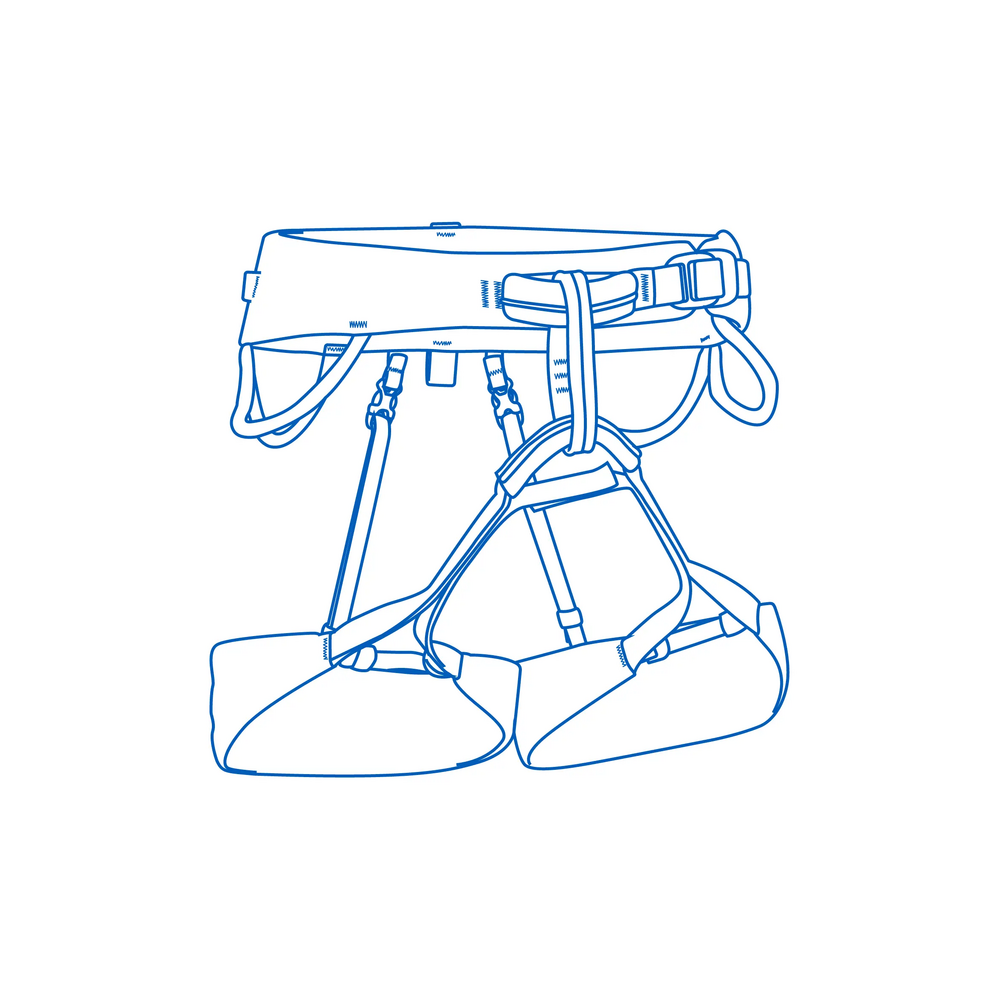PLEASE NOTE: TRAINING IS ESSENTIAL
Mountaineering and climbing are hazardous sports. You are responsible for learning the techniques required for undertaking these activities, as well as the correct use of the equipment. Only individuals trained for activities at height, or under the direct and permanent visual control of people trained for activities at height are permitted to use this material. If you have not received such training, do not use this product. Ignorance and/or incorrect use of the techniques can result in serious injury or death. This user manual has been drawn up in accordance with standard EN 12277: 2015 + A1:2018, as well as European regulation (EU) 2016/425 relating to personal protective equipment. It is impossible for us to foresee all improper uses of this harness. Generally speaking, uses which differ from those described herein are prohibited. Failure to follow any of these warnings could result in serious injury or death.

















